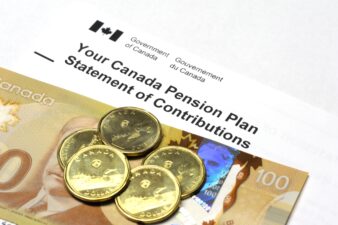The anxiety of an incoming recession is starting to get to investors. Unlike the Great Recession of 2008 to 2009, this time around, there likely won’t be an enormous dip. Instead, we’re likely to continue to see the dips in the market that have come and gone over the last year, followed by one lower dip that would mark the actual recession. That leaves investors anxious but not in such a bad situation as the last recession.
But while it won’t be as bad, it doesn’t mean that investors should think things should suddenly grow into the stratosphere after the recession. In fact, this type of growth — or even lack of it — is something maybe we as investors should get used to survive these periods of low to no growth, referred to as secular stagnation.
Over the last 100 years — really, since the Great Depression — North America and many other First World countries went through some serious growth. A huge part of this growth was due to the baby boomers. After two wars, these countries were ready to rebuild, and then some. Part of that was rebuilding the families they lost, which meant creating a huge number of people in the developed world buying and producing products.
However, this generation is now aging, leaving huge growth in the older population. This population is now looking to retire, or already has, meaning they need to save and spend less and are likely not producing as they used to. In fact, if we look at 1960s developed countries, annual domestic demand growth averaged 5.5%, but for this decade it could land under 2%, as the elderly population continues to age.
As for the next generation, they just aren’t having kids like they used to. During the baby boom, the average family had 3.7 children in Canada. More recently, that number has dropped in half to 1.7 children per household. That means the workforce once available is no longer around.
So again, while the markets will turn around after a recession, if investors are hoping to survive in the future they should likely just get used to slower growth in the economy moving forward. Especially in developed countries, that incredible growth after both wars is now passed. Now, it’s the time for other countries to see this growth, with emerging markets already happening in places such as Asia, Central and South America, and India.
If you’re looking to maintain some steady, stable growth rather than risk investing in stocks that — while they could boom — could crash and burn, it might be better to find funds that offer some exposure to these new countries. At the very least, you could put your cash into a fund that will see low growth, but will remain stable for years to come. If that’s the case, I would consider an exchange-traded fund (ETF) such as BMO Low Volatility Equity ETF (TSX:ZLB).
This fund pretty much outlines what it is in its name. The company offers a low-volatility option for investors, choosing high-quality, Canadian stocks that provide very little risks. This means while you won’t see spikes in share price, you also won’t see wild swings as the markets go up and down. While the growth won’t be substantial, if you’re investing in this ETF for the long run you’re likely to see significant growth.
It’s not like you’ll see no growth. If you purchased only five years ago, your shares would have grown 44% in that time. That would make a $20,000 investment worth about $28,821.07 today. That’s certainly not nothing. The ETF also offers a dividend yield of 2.43% as of writing that investors can use to reinvest further.
So, while investors shouldn’t expect the growth that their parents and grandparents once saw, they also shouldn’t expect no growth all together. Investing in stable funds such as the BMO Low Volatility option means that while you won’t get the excitement, you’ll certainly get some cash.







